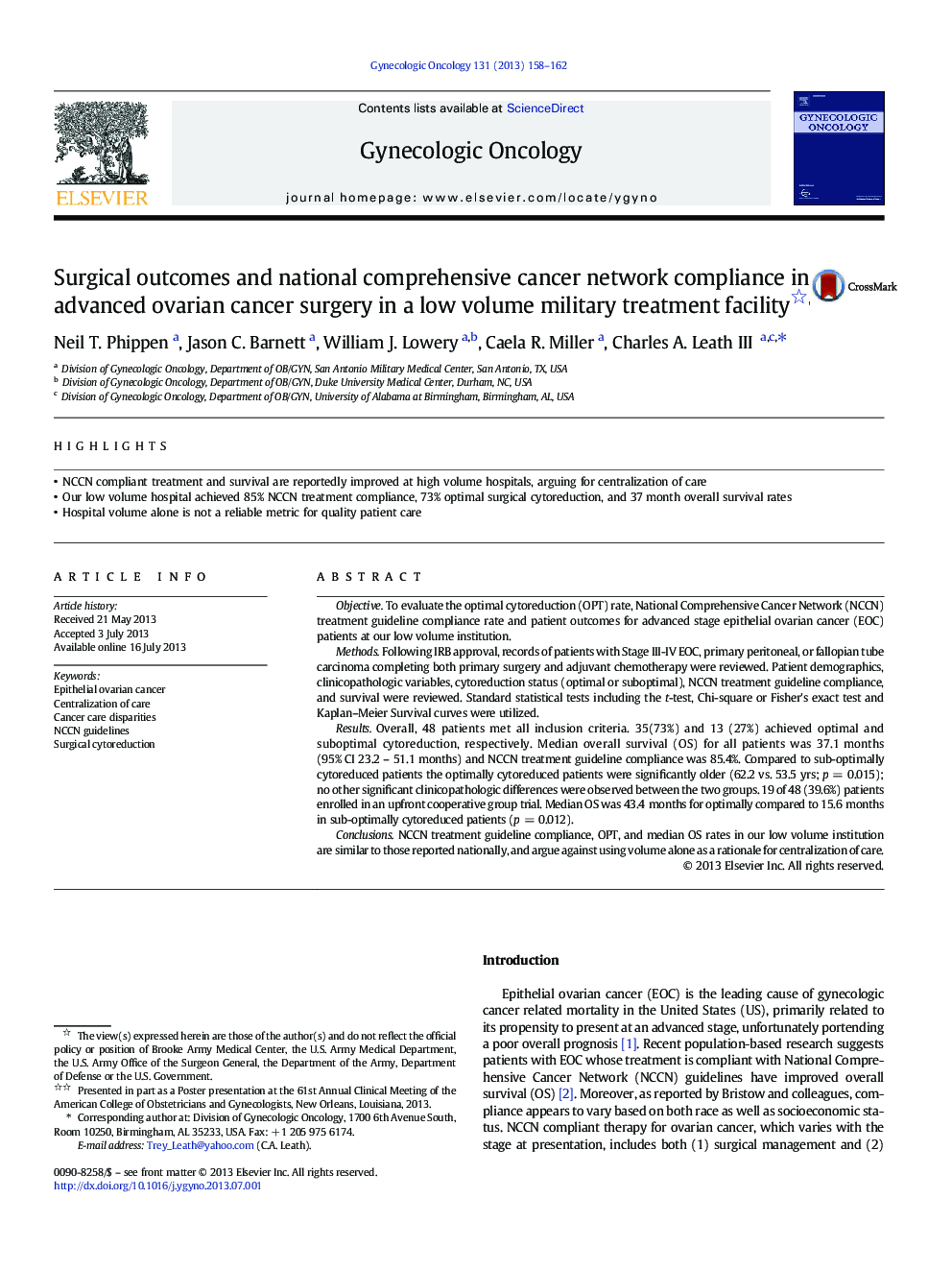| Article ID | Journal | Published Year | Pages | File Type |
|---|---|---|---|---|
| 6185256 | Gynecologic Oncology | 2013 | 5 Pages |
â¢NCCN compliant treatment and survival are reportedly improved at high volume hospitals, arguing for centralization of careâ¢Our low volume hospital achieved 85% NCCN treatment compliance, 73% optimal surgical cytoreduction, and 37 month overall survival ratesâ¢Hospital volume alone is not a reliable metric for quality patient care
ObjectiveTo evaluate the optimal cytoreduction (OPT) rate, National Comprehensive Cancer Network (NCCN) treatment guideline compliance rate and patient outcomes for advanced stage epithelial ovarian cancer (EOC) patients at our low volume institution.MethodsFollowing IRB approval, records of patients with Stage III-IV EOC, primary peritoneal, or fallopian tube carcinoma completing both primary surgery and adjuvant chemotherapy were reviewed. Patient demographics, clinicopathologic variables, cytoreduction status (optimal or suboptimal), NCCN treatment guideline compliance, and survival were reviewed. Standard statistical tests including the t-test, Chi-square or Fisher's exact test and Kaplan-Meier Survival curves were utilized.ResultsOverall, 48 patients met all inclusion criteria. 35(73%) and 13 (27%) achieved optimal and suboptimal cytoreduction, respectively. Median overall survival (OS) for all patients was 37.1 months (95% CI 23.2 - 51.1 months) and NCCN treatment guideline compliance was 85.4%. Compared to sub-optimally cytoreduced patients the optimally cytoreduced patients were significantly older (62.2 vs. 53.5 yrs; p = 0.015); no other significant clinicopathologic differences were observed between the two groups. 19 of 48 (39.6%) patients enrolled in an upfront cooperative group trial. Median OS was 43.4 months for optimally compared to 15.6 months in sub-optimally cytoreduced patients (p = 0.012).ConclusionsNCCN treatment guideline compliance, OPT, and median OS rates in our low volume institution are similar to those reported nationally, and argue against using volume alone as a rationale for centralization of care.
